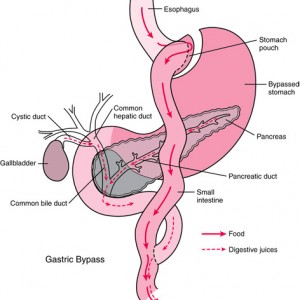About Metabolic Surgery
Bariatric surgery is the other name used to refer to metabolic surgery. This is weight loss surgery performed on severely obese patients. There are several diseases associated with obesity, which include dyslipedia, resistance to insulin and Diabetes mellitus Type 2. Metabolic surgery helps to correct these ailments, which have gross side effects on patients. Cirrhosis is a condition caused by dyslipedia and is treatable through metabolic surgery.
Metabolic procedures involve reducing the size of the small intestines, and subsequently that leads to the consumption of fewer amounts of nutrients and food, hence reducing chances of obesity.
Some Risks for Consideration
 Some people tend to lose weight more quickly than others, and for those seeking to undergo metabolic surgery, there are some risks involved to be considered, which may include:
Some people tend to lose weight more quickly than others, and for those seeking to undergo metabolic surgery, there are some risks involved to be considered, which may include:
Patients who have undergone this surgery have a change in their eating habits, particularly during the first two to three weeks, and one should have meals in liquid form for some time.
The patient then changes to softer foods after approximately three weeks. Beyond three weeks, the patient may start taking normal food, which could last for nine months.
Malabsorption occurs during this procedure hence the need for supplements in form of nutrients and vitamins. This surgery occurs on the lower part of the body and very complex in nature.
Benefits of Metabolic Surgery
Certain health conditions associated with weight gain improve due to metabolic surgery. These conditions include high blood pressure, depression, diabetes, back pain and sleep apnea. Obesity relates to social and emotional changes as well, and self-confidence and mood of patients very often improve when they undergo metabolic surgery.
Types of Metabolic Surgery
There are various procedures involved in metabolic surgery which include:
Gastric banding. It involves placing a band that can be adjusted above the stomach. A small port fills up the band with saline. This stops further consumption of food hence forming a stomach smaller in size. The patient feels full during this procedure. The main advantages of this procedure is that the patient loses 50% of fat in a span over a period of just a few years, recovery is quick due to small cuts, the band can be adjusted and procedure can be reversed. Although there are many benefits, risks for consideration include falling off of band, or when infections occur on port and wearing off of stomach tissue around the band.
Sleeve Gastrectomy. It just a few words, this procedure involves the creation of a smaller stomach, thin in size, and the removal of the rest of the stomach. Benefits of this procedure include the ability to ingest vitamins, proteins, fats and sugars. Weight is lost up to 60% during the first 18 months in many cases. Risks involved with gastrectomy sleeve surgery may include lack of vitamin B12, possibility of undergoing another surgery due to failure of the first, and leakage may occur on the lines involved.
Gastric bypass. This procedure involves the creation of a smaller stomach, typically the size of an egg in size, though this may vary. There is a diversion of the small intestine path to this pouch. Benefits of this procedure are massive loss of weight up to 85%, and patient recovery time is considered to be one of the fastest for any type of bariatric surgery.
Patients should contact Dr Castaneda for more advice, prices and information.


